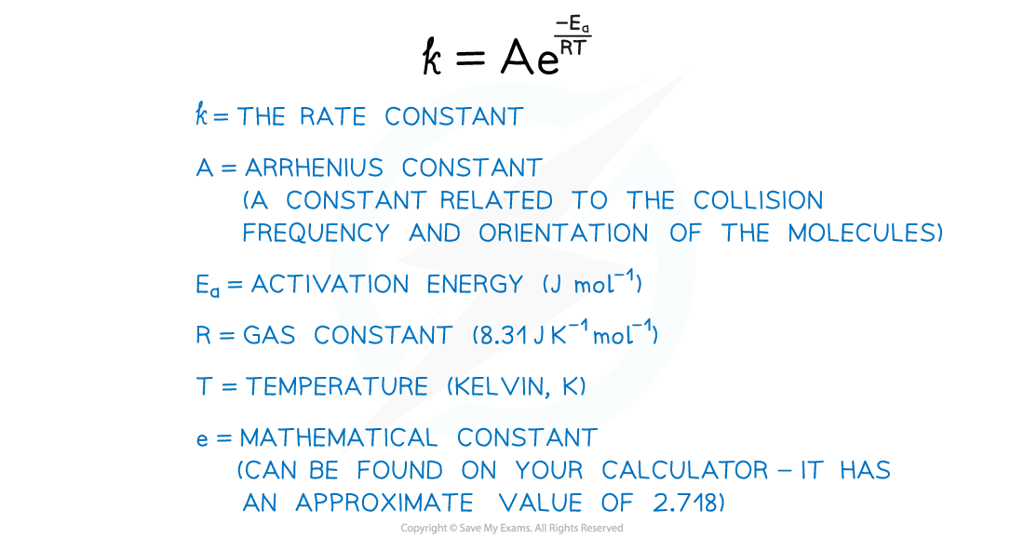- 翰林提供学术活动、国际课程、科研项目一站式留学背景提升服务!
- 400 888 0080
AQA A Level Chemistry复习笔记5.2.4 The Arrhenius Equation
The Arrhenius Equation
- The rate equation shows how each of the reactants in a reaction effects the rate of the reaction and it includes the rate constant, k
- However, k only remains constant if the concentration of the reactants is the only factor which is changed
- If the temperature is changed or a catalyst is used or changed, then the rate constant, k, changes
- At higher temperatures, a greater proportion of molecules have energy greater than than the activation energy
- Since the rate constant and rate of reaction are directly proportional to the fraction of molecules with energy equal or greater than the activation energy, then at higher temperatures:
- The rate of reaction increases
- The rate constant increases
- The relationship between the rate constant, the temperature and also the activation energy is given by the following equation:

- A varies only a little bit with temperature; it can be considered a constant
- e, Ea and R are also constants
Using the Arrhenius Equation
- This equation is far easier to use if you take natural logarithms of each side of the equation, which results in the following equation:

- In the exam you could be asked to calculate any part of the Arrhenius Equation, and using it in this form will make it easier
- The Arrhenius Equation can be used to show the effect that a change in temperature has on the rate constant, k, and thus on the overall rate of the reaction
- An increase in temperature (higher value of T) gives a greater value of ln k (and therefore a higher value of k)
- Since the rate of the reaction depends on the rate constant (k) an increase in k also means an increased rate of reaction
- The equation can also be used to show the effect of increasing the activation energy on the value of the rate constant, k
- An increase in the activation energy (Ea) means that the proportion of molecules which possess at least the activation energy is less
- This means that the rate of the reaction, and therefore the value of k, will decrease
- The values of k and T can be used to calculate the activation energy for a reaction, which is the most common type of calculation you will be asked to do on this topic
转载自savemyexams

在线登记
最新发布
© 2025. All Rights Reserved. 沪ICP备2023009024号-1








